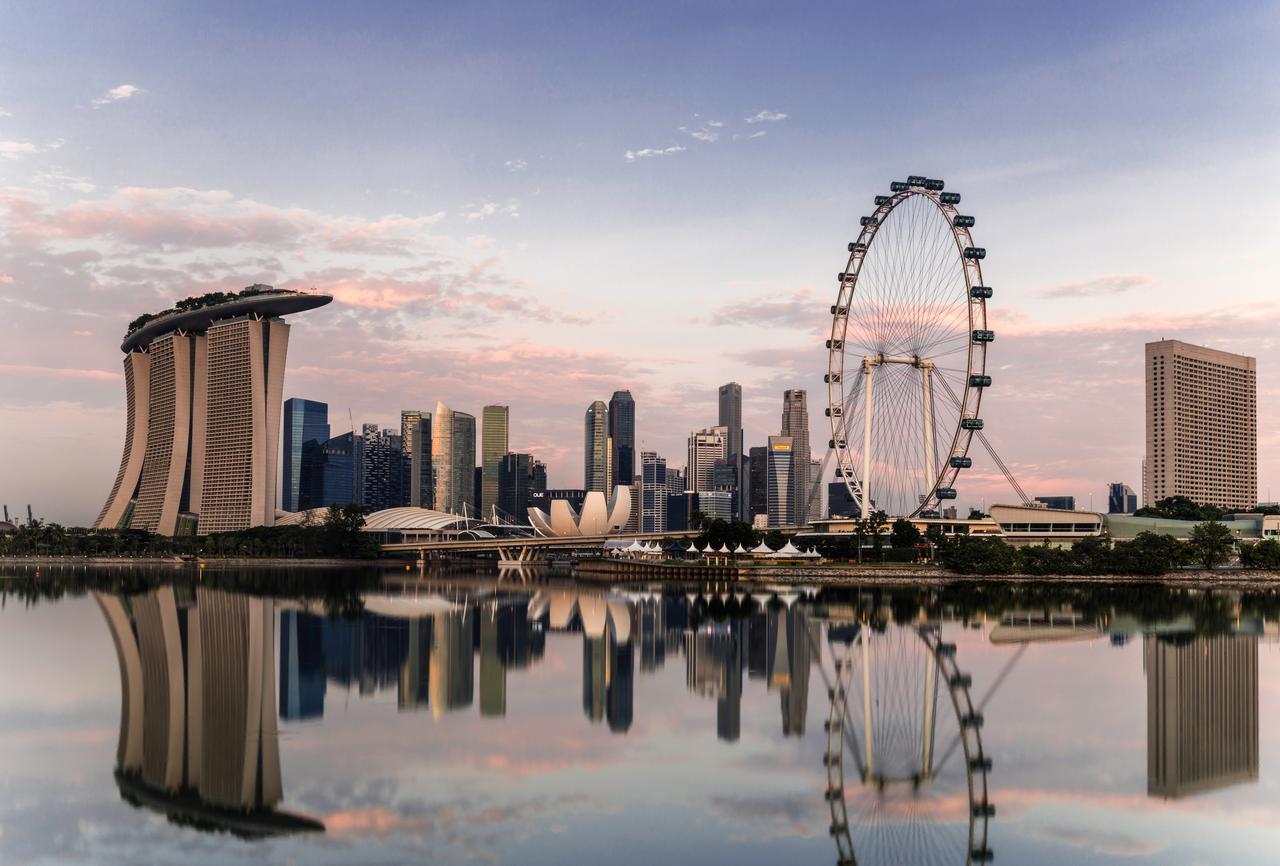26.06.2019 | Mike Dost, Director of the Beznau nuclear power plant, on the 50-year anniversary of KKB
"A piece of Swiss heritage"
The Beznau nuclear power plant (KBB) is 50 years old this year. With investments totalling over CHF 2.5 billion, the plant has been continuously upgraded with state-of-the-art technology. Power plant director Mike Dost on a piece of Swiss heritage, transparent information and fake news, as well as the pillars of the Beznau culture.
The Beznau nuclear power plant is 50 years old. What does it feel like when you walk through the plant?
It's a piece of Swiss heritage with a touch of Swiss pioneering spirit and a good measure of engineering skill. These were people who built something extraordinary with a quality and precision that we still benefit from today. I feel that I am absolutely privileged to be able to walk through this plant and experience the genius of our predecessors. I believe we have an obligation to keep our plant in perfect condition and to continue developing state-of-the-art technology.
Are you proud?
Yes, I am. Very much so! I am proud of our crew. Based on the experience in numerous power plants that I got to know during my professional career I can say that our crew is the best one I have ever been able to work with. I am proud of what we can demonstrate today; the result of 50 years of know-how and generations of experts from many professions. They looked after the plant with complete dedication and passion. I am proud that we can continue operating this facility with the same foresight, steadiness and professionalism, with the same commitment and team spirit that have always been the pillars of the Beznau culture.
«Modern journalism thrives on negative headlines; the truth, or rather the facts, have unfortunately receded into the background.»
With nuclear energy you and your staff are exposed to media pressure. How do you personally and your staff handle this situation?
Today, most journalists do not have a discerning idea about nuclear energy. Terms and professional ethics such as "research, objectivity and facts" have been somewhat forgotten in my opinion. Modern journalism lives from negative headlines; truth and facts have unfortunately fallen into the background.
The plant staff is very well aware that nuclear energy has high media exposure: It's easy to vilify the technology. It is not necessarily easy for non-experts to understand and it can be easily marginalised. Our job must be to inform the public in a transparent, comprehensible, objective manner so that the unknown, nuclear energy, can be understood for what it is rather than as something dangerous and unpredictable.
Fifty years is a long time. A lot has happened technologically. What do you say to nuclear power opponents who compare the plant with a 50-year old Opel?
The underlying technical principle of nuclear fission has not changed in the last 50 years. Many of the peripheral, external systems and components have been replaced, some more than once. We have also installed additional safety systems. What's very important is that components that could not or cannot feasibly be replaced, for example the reactor pressure vessels, are subject to an extensive ageing management process so that we are familiar at all times with the remaining operation time including a very generous safety margin. Switzerland is a world leader in this respect. International experts have also confirmed this.
In the last decades you have invested over CHF 2.5 billion in the plant. Was it worthwhile?
Even from different perspectives the answer is absolutely "yes": It was worthwhile. Many of the investments were made to keep the facility up to state-of-the-art standards as prescribed by Swiss law. Thanks to proactive planning, maintenance and modernisation, operation of KKB remains extremely safe and reliable today. One more reason why the Opel comparison is unacceptable and in my view nothing more than dubious, cheap propaganda.
Where was the money invested?
In various projects to increase plant safety. Let me mention the following as examples:
- the emergency bunker for the safe shutdown of the plant, which has been designed to resist very strong earthquakes and flooding of 5 metres, including emergency diesel power units;
- preventive replacement of the reactor pressure vessel heads;
- filtered pressure release of the containment for beyond-design-basis malfunctions;
- emergency power supply system with four redundant diesel units;
- modernisation of the control systems for protection and control;
- plant-wide data recording systems
- and various projects to increase the available redundancy of safety systems.
How would you describe the technical condition of the plant?
The technical condition is such that safe, reliable operation is guaranteed. Safety is the highest priority for us as the operator. It is also important that we have the condition of the plant assessed by external experts. This enables a comparison with other plants and guarantees independent appraisal. Beznau received top marks in the international comparison from WANO as well as in the stress test that took place after Fukushima as prescribed by the Swiss supervisory authority.
«Switzerland's current power mix and the slow expansion of renewable energies would make our country massively dependent on imports were it not for nuclear energy.»
What will happen to the plant?
Our goal is to operate the plant as long as it is safe. We will continue to make the necessary investments to increase the safety and reliability of the plant. We will also continue to invest in staff competency. Thirdly, we are working on a proactive plan for dismantling and the transition from power operation to decommissioning. A new department in the organisation was established for this purpose.
What is Beznau's contribution to Swiss security of supply?
The Swiss nuclear power plants all make a very important contribution to security of supply and specifically to Switzerland’s good CO2 footprint. Switzerland's current power mix and the slow expansion of renewable energies would make our country massively dependent on imports were it not for nuclear energy. Whether integration into the European power market becomes reality or not does not play a role here. It is assumed that market prices for electrical energy will continue to increase because the capacities for base-load energy will become scarce when the German nuclear power plants are shut down and coal is phased out. Under a very conservatively estimated power price of CHF 40/per MWh, KKB makes an economic contribution of CHF 240 million per year. This is money that does not flow abroad in the form of energy imports. KKB covers about 10% of Switzerland's yearly electricity demand.
Proactively Axpo speaks about a "climate power plant". What exactly is Beznau's contribution to climate protection?
Per year Beznau produces around 6 terawatt hours (TWh) of energy, which is 100% CO2-free in its production. As a comparison: In the year 2018, the 37 large-scale wind power plants in Switzerland produced a total of 0.1217 TWh. To replace the energy produced by KKB, 1,824 wind turbines would have to be installed. It is doubtful whether enough locations even exist and whether the permits could be issued in a reasonable time frame. It must also be noted that the laws of physics still apply: When wind speeds change the fluctuating capacity has to be replaced and made available by another generation form (fossil, hydro) within seconds.
Can that be confirmed in figures?
KKB's contribution to climate protection can be calculated based on the production of the same energy volume generated from the combustion of fossil energy sources. The emission factor for brown coal is approx. 1200 tonnes of CO2/GWh, and 950 tonnes of CO2/GWh for hard coal. If KKB is shutdown, the energy would have to be imported from Germany or Eastern Europe, meaning from energy sources like brown or hard coal. To generate 6 TWh of energy per year, some 7.2 million tonnes, respectively 5.7 million tonnes of CO2 would be produced. Most people cannot really understand this number because it is simply too high; if this amount of CO2 were put in a box, the box would have an area of 10,000 m x 10,000 m and a height of 40 m. In contrast, the highly active, spent nuclear fuel would fit in a volume of less than 1m3. Or differently: If the production of the Beznau nuclear power plant were replaced with brown coal, some 580 million trees would be needed to absorb the CO2 that is produced.





